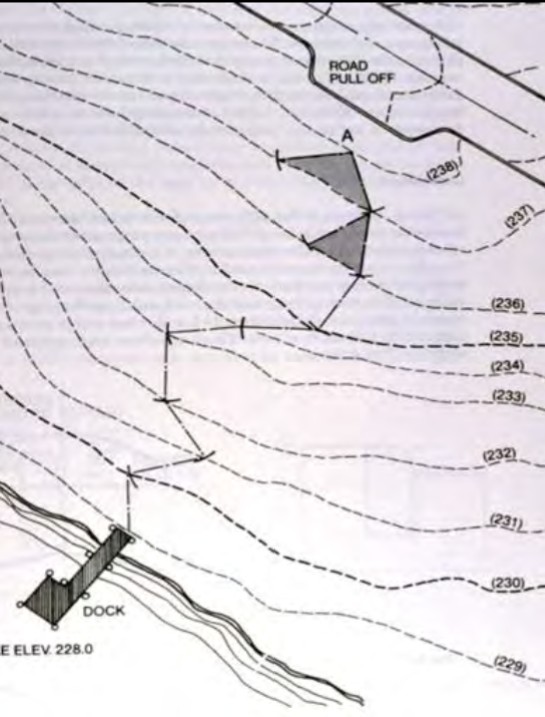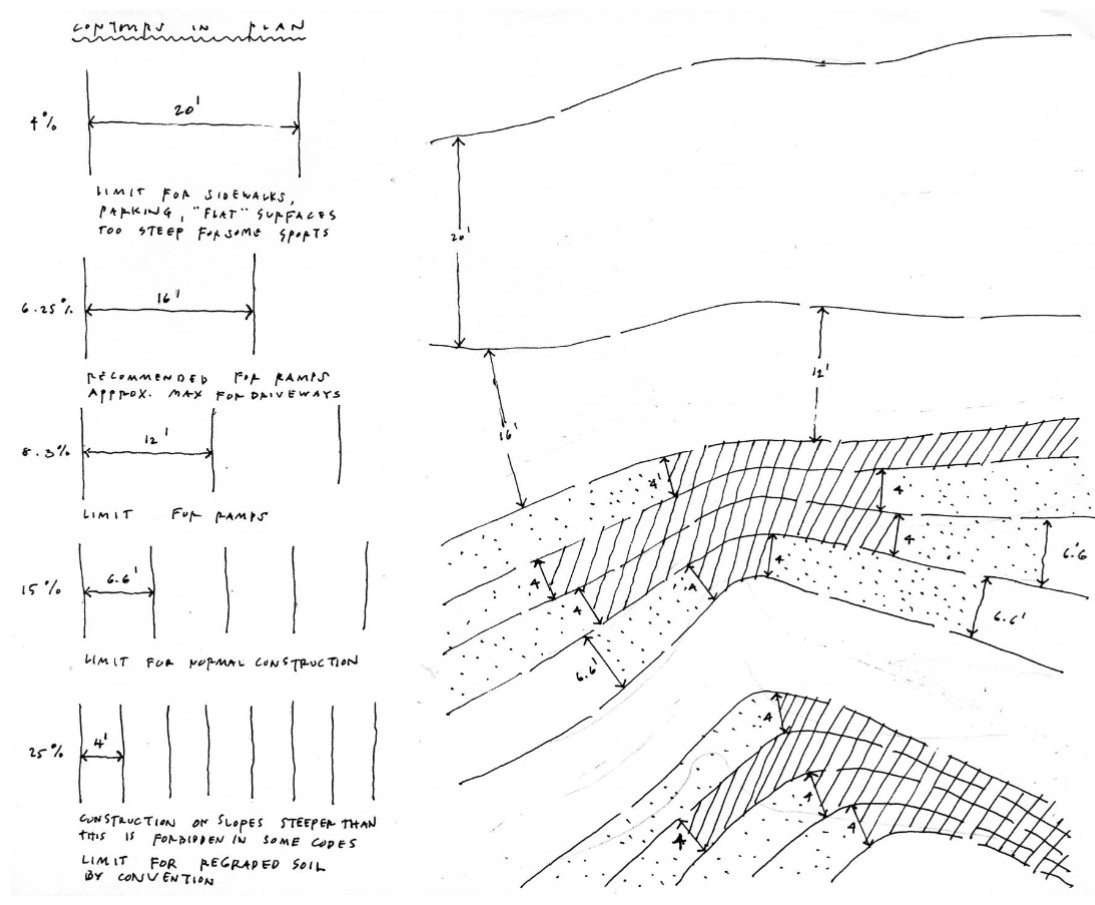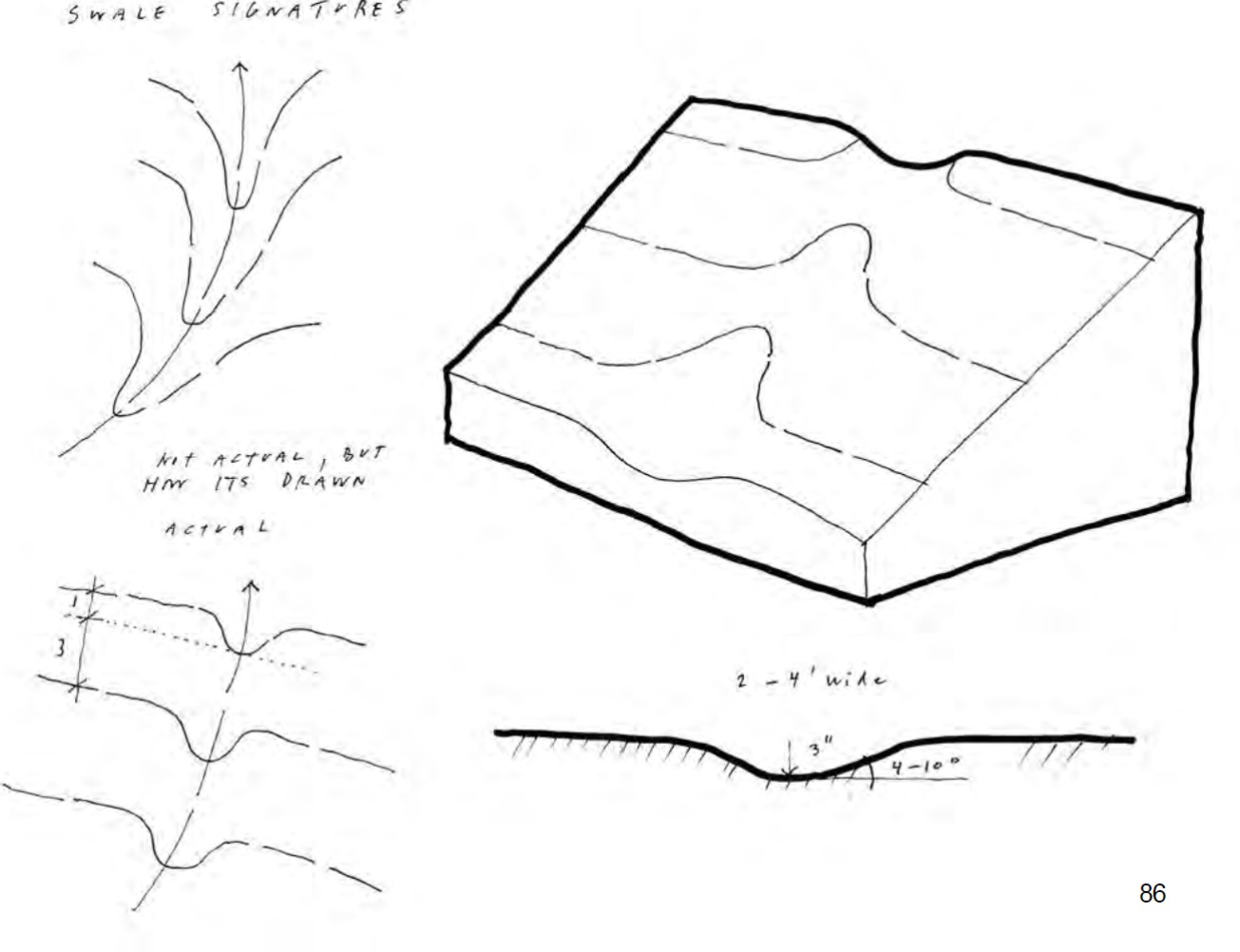Site Design - Class 8: Topography
1/30
Earn XP
Description and Tags
nature restrains siting, part 1
Name | Mastery | Learn | Test | Matching | Spaced |
|---|
No study sessions yet.
31 Terms
Slopes can be expressed as ____, as ____, or as ____ (rare in architecture).
percentages
ratios (rise/run)
angles
Slopes are associated with….
programs! and vise versa
Radius method
From the point of view of COST and grading disturbance, coded access ways (sidewalks and ramps)
are most efficiently laid out by this method, which has aesthetic consequecnes

Landform is described with…
contours
Beyond visualization, you have to also assess slopes as to….
viability

Every INHABITATION or program has a..
contour signature in PLAN, in the DISTANCE between contours
Steps arise from…
a usage that does not match the topographic condition
Fact of slope is the most powerful ______ tools
programmatic
enter (less important) vs go to (most important)
Foundations run with _____.
Contours!
When designing a building along the landscape (contour) it creates…
a dam
Landscape architects usually ____ the vertical scale used in sectional drawings to…
exaggerate
match the experiential condition of the site, which is lost when drawn exactly.
the LONGER the transect, the GREATER variation used
interpolation of contours - surveys (2 methods)
arial oversight (better)
GIS - at every interval, doesn’t capture info as well
Rules of Grading - #1 All contours must …
close on themselves, even if outside the limits of the drawing
Rules of Grading - #2 Contours have a….
Signature! crucial tool
Rules of Grading - #3 pt.1 “moving” a contour downhill in plan makes a…
RIDGE
fill
Rules of Grading - #3 pt.2 “moving” a contour uphill makes a…
VALLEY
cut
cut
makign a valley
fill
making a ridge
Rules of Grading - #4 a basic grading strategy is to balance…
non-structural CUT and FILL
Rules of Grading - #5 the steepest slope is always…
PERPENDICULAR to contours.
water flows downhill, hence water always flows perpendicular to contours.
Rules of Grading - #7 higher on a slope DOES NOT mean…
less wet! assess catchment
Rules of Grading - #6 least expensive way to put in a grade level foundation is ….
PARALLEL to the contour
doing this makes a dam in the landscape
Rules of Grading - #8 contours can, in plan…
ALIGN on top of eachother when running across vertical surfaces
they DO NOT disappear
Rules of Grading - #9 Contours DO NOT __ __ themselves
cross over
Rules of Grading - #10 There are NO ___ exterior spaces
Flat
Rules of Grading - #11 Existing contours are shown with ___ lines, NEW contours are shown with ___ lines
dashed
solid
Engineers prefer every 5th contour darkened
counting lowest to highest elevation
Rules of Grading - #12 something always…
controls!!!
one constant control is teh SLOPE of NEW DIRT: 1 to 4 (25% slope)
new contour lines @ their steepest will be 4’ apart
grading tools and techniques
slope/construction adjacency
spot elevations
swales
Swale signature, 3” swale
in plan
2-4’ wide
bump of swale 1/4 of the distance between contours

2 primary types of grading
for sheet flow
for level areas
3rd kind of gradign (rare)
around objects in slope